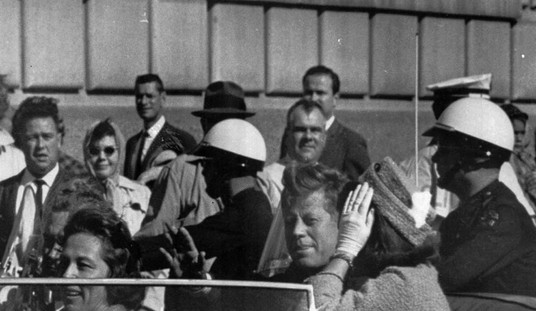At Commentary, Andrew Ferguson has thorough roundup of Gray Lady’s efforts to deploy its standard issue “Gorillas in the Mist” tone with its coverage of Republicans and conservatives. His focus is on Timesman David Barstow, he of Gray Lady’s self-styled CSI-ish “Investigative Unit.” Barstow’s article, which ran in mid-February, was built on Capote-esque research that saw him out there in deepest, darkest flyover country since since October, in the effort to produce the Big, Sweeping Story of the Tea Partiers, and simultaneously dismiss them as a kook fringe, unworthy, as with anything to the right of Michael Bloomberg, of the Times’ readership’s collective attention spans:
This tone of clinical detachment—gazing at the specimen as it dangled from the tip of the forceps—was at bottom a defensive maneuver, and it could have proved politically and culturally useful had the Tea Partiers read their clippings and remained the “fringe movement” the Times and others had decided they comprised. The coverage didn’t so much demonize them as trivialize them, elbow them onto the margins where the nutcakes dwell. It meant that the Tea Parties could be dismissed as a sociological rather than a political phenomenon, and that the ideas inspiriting the movement—for that is what they are, ideas, however artlessly expressed—might be reduced to pathological gestures of fear or anger.
The Tea Partiers declined to go along, though. From October, when Barstow first ventured into darkest Idaho, to February, when his story arrived to sound the alarm, their press coverage underwent a discernible shift in tone and attitude, even at the Times. “Tea Party Looks to Move from Fringe to Force” was the headline over a straightforward Times story written by Kate Zernike in early February. At ABC, a political correspondent suddenly discovered a new, friendlier Tea Party: “The majority of supporters are long-time Republicans,” she said, “but there are growing numbers of independents, and even some former Obama supporters.”
What changed? Everybody loves a winner, of course, even reporters, and the blindsiding victory of Scott Brown in Massachusetts proved that the Tea Party’s ideas could move an unlikely electorate. There was also the weight of reality, which given time can erode the most ardent fantasy: the movement didn’t contain enough Aryans and survivalists to sustain the caricature forever, and sooner or later a reporter runs out of Obama = Hitler signs with which to scare the customers. Whatever caused it, the shift must have caught poor Barstow unawares. It gave his story, conceived in one era and published in another, the crinkly feel of a historical relic, not unlike the readers it was written for.
Heh. Not to mention the Timesmen themselves. Hence the great headline above by JammieWearingFool, who adds:
A day after New York Times simpleton Frank Rich compared Barack Obama to Superman and declared him more popular than any politician, we get word today that the Tea Party, which isn’t really a party at all, is more popular than his hero.On major issues, 48% of voters say that the average Tea Party member is closer to their views than President Barack Obama. The latest Rasmussen Reports national telephone survey found that 44% hold the opposite view and believe the president’s views are closer to their own.
Not surprisingly, Republicans overwhelmingly feel closer to the Tea Party and most Democrats say that their views are more like Obama’s. Among voters not affiliated with either major political party, 50% say they’re closer to the Tea Party while 38% side with the President.
Meanwhile, “Et Tu Gallup? Second Polling Org. Shows Tea Party as Bi-Partisan, Bi-Racial Movement.”
Those nutty Stalinists.
(H/T: IP)
Related: Hey, remember when Maxine Waters enjoyed “‘Vulgar’ & ‘Outlandish’ Protest Rallies?”










Join the conversation as a VIP Member